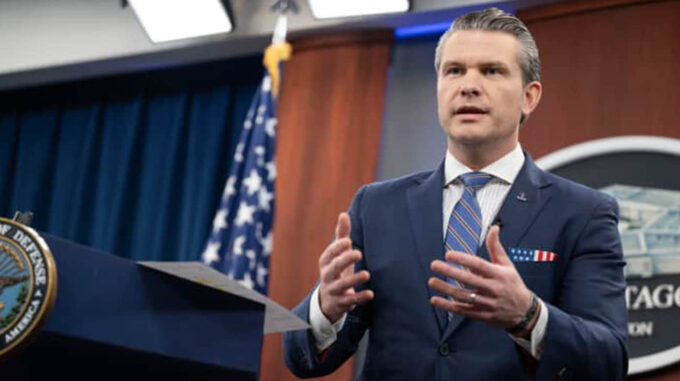Overall, a new star of sparks of unclear and, according to some sources, quite chaotic decisions has ignited at the heart of the American administration

These decisions directly affected the issue of military support for Ukraine. According to the news agency Reuters, the scenario that unfolded in the lead-up to Donald Trump’s second presidential term became a kind of example of internal disagreements and discrepancies that could have significantly influenced the U.S. military-political course in the context of the conflict on Ukrainian soil. According to sources from Reuters and several independent experts, a order to temporarily halt military aid shipments to Ukraine was issued without the knowledge of the White House and without coordination with the higher administration leadership. This order allegedly originated from the office of Pentagon Chief Pita Ghasset and was transmitted to U.S. Transportation Command (TRANSCOM), responsible for logistics and transportation of military cargo. Reports indicate that approximately a week after Trump’s inauguration and the start of his second term, high-ranking officials transported 11 flights with artillery shells, other types of weapons, and military equipment to Ukraine — but suddenly received a command to stop them. What exactly prompted such a decision remains a major question. Sources indicate that inquiries from Ukrainian and European officials began arriving on February 2, requesting to suspend supplies. The flights themselves were halted around February 5, but fully resumed in the first week of February, creating significant chaos in military logistics and causing understandable concern in Kyiv and Warsaw. Reuters sources emphasize that this initiative was likely authorized from the office of U.S. Defense Secretary Pita Ghasset. However, this fact remains unconfirmed for most analysts, as no official confirmation from the agencies has been made. At the same time, those who witnessed the events and have access to closed data say that the order to stop the flights was issued within the framework of internal politics and became one of the stages of what is called the “political game” at the upper echelons of power. According to sources, several high-ranking officials, including those not directly involved in decision-making regarding military aid to Ukraine, were engaged in this order. It is noted that the idea to suspend supplies arose during discussions among consultants and advisors, many of whom are far from the government system and have long opposed active military support to this country. However, the administration itself denies any leadership of the order or its compliance with official policy. Official statistics show that the flight stoppage cost at least $2.2 million in logistics expenses for TRANSCOM. After a short pause, supplies resumed only on February 4, but in the long term, this discord likely became one of the elements demonstrating internal divisions within the upper echelons of the White House and the Department of Defense. According to the same sources, an important detail is that the decision to halt the shipments was made without consultations with the operators or responsible agencies, and their reaction — surprise and confusion — seemed to be a symptom of a deeper split within the teams responsible for foreign policy. Equally important is that these orders were canceled only several days later — on March 4 — after Ukrainian President Volodymyr Zelensky’s return to the White House for discussions on the situation and temporary military aid tranches. A logical question arises regarding the role of then-President Donald Trump, since political figures from his circle and analysts who closely monitored this process have so far not provided a clear answer as to whether he or his advisors could have directly influenced these decisions. Additionally, some sources suggest that certain security advisors proposed implementing a “logistics pause” to exert pressure or review policy support for Kyiv. Overall, this story once again vividly demonstrates how complex and unpredictable the internal dynamics of decision-making at the highest levels of the U.S. government can be. During the investigation, journalists encountered discrepancies and unanswered questions regarding certain facts. Notably, it remains unclear how fully Ghasset and his team understood the implementation of the order, and whether they realized that their initiative was effectively contradicting official policy directions. Ultimately, this situation underscores once more that in the chaos of political and military decisions, unpredictable influences on strategic directions can sometimes emerge — including those that have a direct impact on international security and Ukraine’s stability. Although officially the process was quickly canceled and stopped, questions remain: who exactly made these decisions, how they were made, and how well they align with the values and objectives of the United States in the context of assisting Kyiv and supporting democratic principles in the region.

